Life can sometimes get overwhelming. It can be a struggle to multitask and cross out your endless activities while still feeling like you aren’t getting anything done. Organization apps can be lifesaving instead of having scattered information across different email addresses, scribbled words on sticky notes, notebooks and journals. Some of these apps are free Read more
Guest Blog
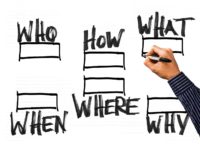
Life can sometimes get overwhelming. It can be a struggle to multitask and cross out your endless activities while still feeling like you aren’t getting anything done. Organization apps can be lifesaving instead of having scattered information across different email addresses, scribbled words on sticky notes, notebooks and journals. Some of these apps are free and can help improve productivity while keeping efficiency levels high as well.
With most of the apps available across several platforms (iPhone, iPad, Android, and web), you will be able to streamline specific niches of your life such as work, relationships, and self-care. While your small business can be hard to organize, apps such as fieldpulse.com are a great management app for service contractors. Want to learn more? Check out other apps you can use to add a little organization in your life.

Evernote
This do-it-all app has several organizational features that will help you manage to-do lists, scan business cards, and record voice memos. It can be your digital life cabinet, note-taking tool, recipe-keeper, project management system, and more. It is available on Android and Apple, is free, and offers an optional subscription. A subscription offers more features and storage.
Microsoft To Do
Whether it’s for work, school, or home, To-Do will help you increase your productivity levels while decreasing stress. It is a virtual, Cloud-based app that enables you to track notes, deadlines, tasks, and projects. On iPhone, iPad, and Android, To-Do has unique features, like personalized color-coding, adding reminders and due dates, and taking notes when needed.
Fortunately, Microsoft-To-Do syncs with your phone and computer, so your to-dos are accessible from anywhere in the world and when you’re on the go.
Trello
Trello uses its digital platform to find delight in planning. It has unique designs around the notion of “boards” and “cards.” Think of it like a whiteboard filled with lists of sticky notes, except you can allot due dates, color codes, archive, and set reminders. Collaborate, manage projects and invite teams to work with and reach new productivity peaks as Trello automatically reminds you about anything coming up in the next three days.
You can also use Trello’s intuitive features at home for:
- Booking a vacation
- Party planning
- Home renovation
- Household chores
- Meal planning
It is perfect for collaborating with family and friends too.
Any-Do
It is an award-winning app that helps add tasks, organize them into lists, and add due dates. Available in Android and Apple, it is a part calendar, a part to-do list that integrates nicely with other apps, from note-takers to social networks. It stands out with its daily “Plan my Day” highlight, which forces you to schedule when you’ll accomplish your tasks so that you remember actually to do things. It is free, but a monthly subscription unveils all its features.
Todoist
With over ten million users, Todoist is an excellent app for planning weekly tasks, setting reminders, and turning essential emails into jobs. It is versatile enough to adapt to most workflows but not so complex as to overwhelm. It allows users to mesh their approaches to productivity with well-known methodologies. Todoist is entirely free to use, but when you need additional features like reminders, you can always upgrade to the Pro or Business plan. Paid users can create custom filters and labels, and there are also some basic collaboration features.
Tick-Tick
Whether you need to schedule a plan, make memos, share shopping lists, or collaborate in a team, Ticktick has an excellent interface to keep your life on track. Adding tasks is quick, thanks to natural language processing and a voice input feature. It is available on just about every platform.
Ticktick offers a few features above and beyond what other apps offer, such as a built-in Pomodoro timer, integration with various third-party calendars, and a built-in habit-tracking tool.
The Bottom Line
Depending on what you need, there is a great organizational app for you. Every one of the above-mentioned free apps is pretty great at getting the job done and keeping you productive.
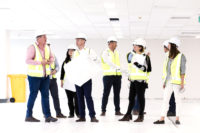
Over the last year, the construction industry like many other industries have faced various impacts from the pandemic. One of the largest hurdles they have had to overcome is the lack of access to job sites. Around the world safety restrictions have been instituted, ranging from international lockdowns to limiting just two people to each Read more
Over the last year, the construction industry like many other industries have faced various impacts from the pandemic. One of the largest hurdles they have had to overcome is the lack of access to job sites. Around the world safety restrictions have been instituted, ranging from international lockdowns to limiting just two people to each freight elevator, which a year ago were shuttling dozens of construction workers in one cabin. This has required construction managers to find innovative solutions to move projects forward without incurring additional risks or delays.
Integrating technology into the construction process has become a necessity for many construction teams to maintain communication with all parties, monitor site progression, and complete various tasks typically done in person. Technology platforms like OpenSpace.ai provide 3D photo documentation capabilities allowing project teams and stakeholders to virtually track and tour job sites they’re not able to visit in person. Other apps offering virtual assistance like advanced calendaring, geo-locating and equipment tracking, have all helped to ensure seamless continuity over the past year.
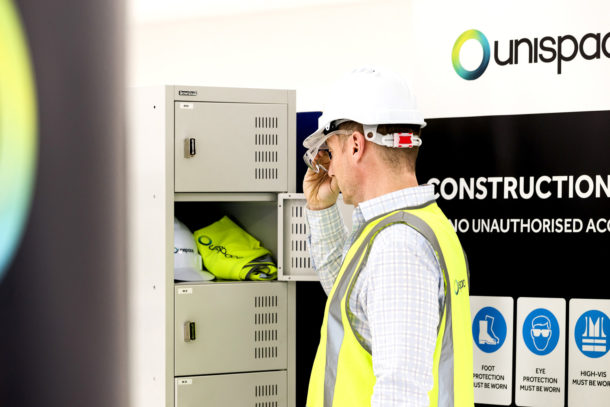
Outside of on-site challenges, access to commodities have caused issues with project progression. When foreign steel and lumber companies experienced supply chain shortages, many construction firms turned to domestic providers. As a result, understanding the global landscape with local market knowledge has been crucial when looking for and sourcing materials. Having local connections has enabled many construction jobs to continue with limited interruptions.
Maintaining a strong client experience, even while incurring internal and external challenges is important. Just like with their internal teams, construction managers need to make sure their key stakeholders and decision makers are informed, comfortable, and satisfied through the process. Especially if teams are unable to visit site locations, finding work arounds, communicating, and reinforcing commitment is key.
Through an integrated approach blending strategy and design with pre-construction and delivery, issues with access and other hurdles are resolved early on in the project. Combining these services into one process removes the risk of cost overrun, scheduling delays, and other risks. When construction is involved in the beginning, during the planning stages, potential issues can be communicated and minimized with a collaborative plan of attack. This enables teams to deliver projects more quickly without sacrificing quality. Especially during uncertain times, a seamless process and end-to-end experience can establish a long-standing partnership with clients.
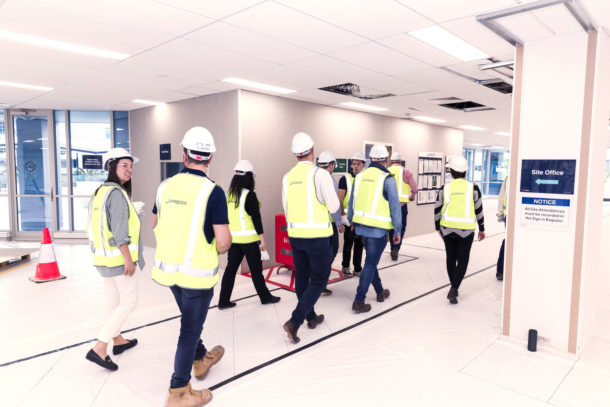
An example of leveraging technology and an end-to-end process to overcome significant Covid-19 hurdles is when Unispace managed a project in Canada for an American client, and both the project team and client were unable to cross the border. The team had to get creative to move the project forward while keeping the client informed and satisfied. OpenSpace along with a streamlined communication across internal and external parties allowed Unispace to navigate the project completely remotely, without ever visiting the job site. This type of agile process is expected in the future as firms and their clients continue to navigate the evolving real estate landscape.
Managing large commercial real estate projects nationally and globally requires a seamless approach enabled by workplace intelligence and technology to meet the pace of change. The pandemic has challenged construction and design executives to push the boundaries and expand their horizons to incorporate new tools and processes. By leveraging technology, knowing the local markets, and focusing on the client experience, all within an end-to-end approach, construction managers can complete projects successfully even under difficult circumstances.
 Tracy Lea Neff is a highly accomplished workplace design and delivery professional who has oversight of the North America Unispace Delivery team and all construction projects in the Americas. Recipient of the 2017 New England CoreNet Americas Real Estate Executive of the Year Award and a graduate of the 2018 CoreNet New England Leadership 2.0 Program.
Tracy Lea Neff is a highly accomplished workplace design and delivery professional who has oversight of the North America Unispace Delivery team and all construction projects in the Americas. Recipient of the 2017 New England CoreNet Americas Real Estate Executive of the Year Award and a graduate of the 2018 CoreNet New England Leadership 2.0 Program.

Hiring, Inflation, Spending, and Travel will Trend Higher The U.S. will add more than 2 million jobs Between April and June, our great nation will add about 700,000 jobs per month on average. If I’m wrong, I’ll still have a job since I own my business, and I won’t be laying me off. If I’m Read more
Hiring, Inflation, Spending, and Travel will Trend Higher
The U.S. will add more than 2 million jobs
Between April and June, our great nation will add about 700,000 jobs per month on average. If I’m wrong, I’ll still have a job since I own my business, and I won’t be laying me off. If I’m right, America will still be down by more than 7 million jobs since the pandemic began.

Inflation will surpass 2%, with commodity prices surging
Actual inflation has trended well below expected inflation since the pandemic began in early 2020, but we’ll see it pick up in the second quarter of 2021. Supply chains are already unsettled, not just by trade disputes, Brexit, and COVID-19, but by a big boat that was stuck in the middle of the Suez Canal.
With a tsunami of demand coming from global consumers during the months to come, shortages of many inputs will worsen and prices will be pushed higher. Some of this has already happened. Softwood lumber prices are up 80% over the past year,¹ driving up the cost of building the typical single-family home by approximately $24,000.² Iron and steel prices are up 22%, and overall construction input prices are up nearly 8%.³
Consumer discretionary spending will expand dramatically
This one is obvious. With the household savings rate bulked up by stimulus and the suppression of many spending opportunities, consumer spending will take off during the months ahead. Retailers would be wise to invest intensely in their inventories in order to take advantage of surging demand.
Leisure travel will quickly return to pre-pandemic levels
It’s been a long year (365 days). If you didn’t need a vacation before, you need one now, and you aren’t alone. Book your flights now. Make your hotel reservations now. People are itching to travel (itchiness, as far as I know, isn’t a COVID-19 symptom), and you don’t want to be left behind.
From March 14-20, U.S. hotel occupancy rates reached 85% of 2019 levels, which means that many people are already on the move.⁴ You saw the pictures from Miami Beach. In some places in Texas and Florida, where pandemic restrictions have been lifted and have stayed lifted, hotel occupancy is already above 2019 levels. Oh, and make your restaurant reservations, too. While reservations are still down about 25% from the same time in 2019, that will change quickly as more people are fully vaccinated.⁵
Business travel won’t
Leisure travel will likely return to normal levels this summer. Business travel won’t. During the week of March 25, TSA headcount numbers were down 37% from the same week in 2019.⁶ Even as pandemic-related restrictions are lifted, many businesses have learned that Zoom calls are easier and cheaper than flying across the country to meet face-to-face. So while business travel will pick up during the months ahead, it will be a long time before it is fully recovered. That means fewer people on their cellphones as you patiently wait in terminals.
What to Watch
Inflation, inflation, inflation. Whether or not the Federal Reserve or the Treasury Department believes it, the inflation risk is every bit as real as the Dodgers winning another World Series.
Enjoy!
 Anirban Basu, Chairman & CEO
Anirban Basu, Chairman & CEO
Anirban is a study in contradictions. He has been called an economist with a personality, or alternatively, one with a sense of humor. He has twice been recognized as one of Maryland’s 50 most influential people. He has also been named one of the Baltimore region’s 20 most powerful business leaders. In 2014, Maryland Governor Larry Hogan appointed Dr. Basu as Chairman of the Maryland Economic Development Commission. He teaches global strategy at Johns Hopkins University and serves the Chief Economist function for a number of organizations around the country. He has read every one of Agatha Christie’s novels, is an avid fan of James Bond, English football, Indian cricket, all Baltimore teams, and lives with his wife and two daughters, Kimaya and Kohena

The ever-growing expansion of technology and the emergence of globalization have made the digitization process an inevitable part of progress in various industries, including construction. New trends in technology are crucial for coming up with quicker, smarter solutions, and increasing efficiency while reducing unnecessary costs. While these trends have been met with certain reluctance by Read more
The ever-growing expansion of technology and the emergence of globalization have made the digitization process an inevitable part of progress in various industries, including construction. New trends in technology are crucial for coming up with quicker, smarter solutions, and increasing efficiency while reducing unnecessary costs. While these trends have been met with certain reluctance by this industry, over time they are becoming an integral part of the future. Here are some of the technology trends that are changing the construction industry that we know:
1. Building Information Modeling Technology (BIM)
Building Information Modeling Technology (BIM) is a software for 3D design that has found significant use in the construction sector. This software is similar to Computer-Aided Design (CAD), with the main difference being that BIM focuses on the design and construction of commercial buildings rather than mechanical and electrical assemblies. BIM is used to create digital models of what is going to be built, and not only that – it assembles metadata to be used within the project to improve its workflow and collaboration.
A study on BIM trends gathered data from 32 major construction projects and found that integrating BIM in construction resulted in 40% elimination of unplanned change, 80% reduction of time for generating a cost estimate, and up to 7% reduction of the overall time of the project.
Through BIM, the construction industry profits from more efficient designs, better accuracy, and reduction in errors due to digitalization. This software facilitates the detection of clashes in designs within a project, for example in the electrical and plumbing system.
2. HD Surveying and Geolocation
GPS-capable devices have become an inseparable part of living in a technologically-advanced era. This technology has luckily found good use in the construction industry, where it has enabled to predict and avoid inaccurate depictions of ground conditions through high definition photography, 3D laser scanning, and advancements in unmanned aerial vehicles (UAV) and drones.
GPS technology and sophisticated software have further aided spatial inspection and progress monitoring processes by enabling easy camera access to the location of equipment and sites.
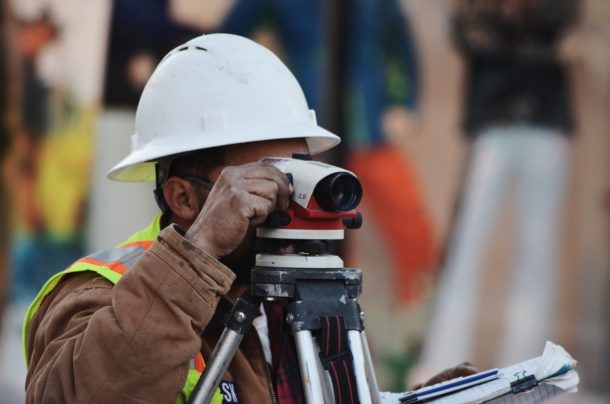
3. Digital Twin
This relatively new but useful terminology in construction has enabled the digital representation of assets and systems in construction. The digital twin or replica mirrors a physical version of a project into its digital version, so project management is made easier by comparison of the two.
The digital replica offers a cost-effective solution for operating and testing real-life scenarios beforehand, so it minimizes possible errors and focuses on improving on-site safety. This technology syncs changes in real-time and is a tremendous advantage to the visualization, modeling, analysis, simulation, and further planning of a construction project.
4. AR & VR
By now you may have guessed that this next technological advancement is also beneficial to the visualization process of a construction project. The futuristic technology of Augmented Reality (AR) and Virtual Reality (VR) have entered the world of construction to allow for a special type of immersion into the project. AR technology adds and combines digital elements to a live view, which is useful for trial and error of ongoing additions within the project, whereas AR invites users for a complete immersion of the digitalized project, undisturbed by the physical environment.
What this means for the industry is that walkthrough tours with designers, contractors, and clients will become much more productive. On-site work conditions will be easier to visualize. Managers and workers can detect possible errors much more quickly, consequently avoiding additional costs and safety hazards.
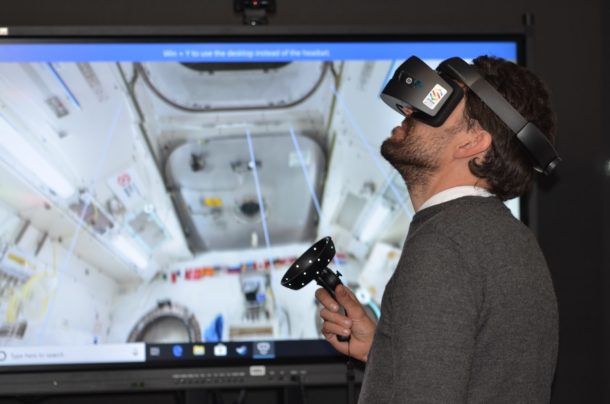
5. UAV and Robotics
Construction efficiency is progressively on the rise through new developments in the field of robotics and Unmanned Aerial Vehicles (UAVs). Additionally, robots have eliminated the need for hard manual labor such as lifting heavy weights and working with heavy machinery. This was done through the emergence of on-site production robots, and autonomous vehicles such as diggers and bulldozers.
This technology not only makes the construction project more efficient, but it allows for more precision and reduced cost and safety hazards in human labor.
6. 3D Printing
The rapid growth of 3D printing in construction is another addition to the technological advancement in this field. Through full automation, 3D printers eliminate the possibility for human error, which consequently saves a significant amount of costs through the reduction of material waste. Not only is it cost-efficient, but it also saves production time by digitally creating specific components of a construction project, or through its use through an arm attachment on the construction site.
3D printers also allow for printing materials and pieces in larger quantities, with the ability to tweak and make changes at any given time.
7. Facial Recognition & Biometrics
If you have a smartphone, you probably know of its facial recognition, fingerprint, and voice recognition features. This is known as biometrics, a field that uses physical and behavioral traits to identify human beings. This recognition system is slowly becoming a new trend on construction sites since it assists with tracking individual workers on the site. Through it, management can effectively grant and restrict access in certain areas of the site, reduce fraud, falsification, and abuse.
Biometrics is ideal for increased safety, as well as it makes payroll management easier.
Slowly but surely, the construction industry is adapting to new technological trends. The reduction of manual processes, however, does not necessarily mean fewer jobs for humans. Without the brains behind construction, the industry would surely cease to exist.

Boost revenue and customer satisfaction with these installation considerations Whether driven by rising utility costs, increased hot water demands, or environmental concerns, many homeowner customers are turning to propane tankless water heaters for a reliable, efficient water heating solution. The relatively low price and access to propane delivery services are other reasons they’ve become popular Read more
Boost revenue and customer satisfaction with these installation considerations
Whether driven by rising utility costs, increased hot water demands, or environmental concerns, many homeowner customers are turning to propane tankless water heaters for a reliable, efficient water heating solution. The relatively low price and access to propane delivery services are other reasons they’ve become popular.
Propane tankless systems provide reliability and efficiency, while supplying high volumes of hot water. Because these units only need to run when hot water is needed, their gas usage must ramp up quickly when meeting high demands for hot water. As popularity of tankless systems continues to grow among customers, it’s important for you to be aware of the proper installation techniques for the gas lines that supply the tankless unit.
Help your customers get the most out of their water heater by using these five tips:
Make sure to properly size the line
When it comes to proper gas installation, manufacturers may offer varying guidance, but following the National Fuel Gas Code is the most straightforward way to ensure you’re following proper procedures.
Properly sizing the gas line is critical to ensure a customer’s tankless water heater runs at optimal efficiency. Neglecting to consider the whole system load may leave your customers with an undersized and underperforming system. Here are five factors to consider when planning for correct sizing.
- Type of gas (propane or natural gas)
- Inlet pressure
- Total length of piping run
- Type and number of gas appliances in the home
- The maximum potential gas load of the whole home
Additionally, you can download and reference the Propane Technical Pocket Guide, which provides information on how to prepare for the installation of propane systems in residential and commercial construction projects.
Consider installing one size larger gas line
Calculations aside, manufacturers like Rinnai often suggest installing larger gas lines than ones used to service tank type water heaters. It can save you from having to retrofit to a larger gas line, which can cost several hundred dollars — whereas the cost difference between running a half-inch versus a three-quarter-inch upfront is minimal.
Consider incorporating propane
Propane offers a convenient and readily available energy solution, allowing you to install gas tankless water heaters even when natural gas isn’t available. Plus, a local propane company can bury underground tanks, and, in big developments, they can put in underground piping, too, so it works just like a natural gas system.
Incorporate flex pipes
Consider using flexible gas piping — such as corrugated stainless-steel tubing (CSST) — over fixed iron pipe for running gas lines, as flex pipes can speed up and reduce the costs of your installation.
Factor gas lines into your design
In many projects, you can bypass running a gas line all the way around or through a home by installing the unit on an exterior wall or outside instead. Doing this allows for shorter gas line runs and easier venting, too.
Visit Propane.com/Water-Heating for more information about propane water heaters and installation tips.
 Bryan Cordill is director of residential and commercial business development for the Propane Education & Research Council. He can be reached at bryan.cordill@propane.com.
Bryan Cordill is director of residential and commercial business development for the Propane Education & Research Council. He can be reached at bryan.cordill@propane.com.
